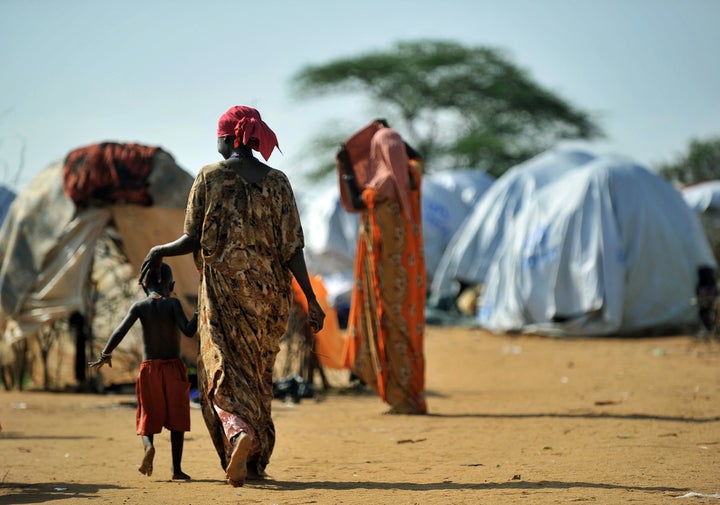
Ten days ago The New York Times carried the headline, "Somalia Famine Eases With Rainfall and Aid" and quoted UN officials as saying that the number of people facing imminent starvation in Somalia had dropped by half a million to 250,000. To those of us who have been trying to get assistance to the region for the past six months, this is of course good news.
In the first place, it is good just to get the famine mentioned in the mainstream press. Between mid-October and mid-November, CNN had cited the famine fewer than 10 times while referencing Kim Kardasian's mini-marriage almost 70 and Herman Cain's alleged sexual escapades nearly 200. And it is good news because fewer people are dying. But the true story is far more complex than it appears.
Aid agencies are often accused of exaggerating the direness of humanitarian crises for their own mercenary reasons. When people are thought not to be in jeopardy, funds dry up; success breeds indifference. In the case of Somalia, NGOs and the UN have done a remarkable job of getting aid to the needy under extraordinarily difficult circumstances -- a failed government in Mogadishu; threats from the terrorist group Al Shabab; a military incursion by Kenya; and an utterly inadequate infrastructure for the delivery of supplies. The international community can take some justifiable pride in its accomplishments. But equally justified are the worries.
I live in Gloucester, MA, home of The Perfect Storm, Sebastian Junger's famous account of the sword fishing boat Andrea Gail and the perfect conjunction of low pressure, high pressure and tropical moisture that sunk her near Sable Island in the north Atlantic in the fall of 1991. I have frequently thought of the applicability of that metaphor to Somalia the past six months as it experienced its own perfect storm through a combination of drought, governmental incompetence and violence -- first internal violence prompted largely by Al Shabab, and then violence wrought by Kenyan (and, potentially, Ethiopian) intervention. The result was as many as 13 million people across the Horn of Africa in need of emergency assistance.
That number is now down to 4 million -- better but still about the population of Los Angeles. Three of the six zones in Somalia, the worst of the affected areas being the ones controlled by Al Shabab, still face famine and Al Shabab continues to threaten and harass aid workers. What has been little noticed, moreover, is that drought knows no borders. The crisis is not confined to Somalia but has spilled over into Kenya and Ethiopia, both relatively stable countries until now, where it could have long-term drastic consequences.
Among other things, tens of thousands of Kenyans and Ethiopians have been internally displaced by the famine and the conflict. Because refugee complexes take only those who have crossed borders, tensions between the internally displaced and Somali refugees remain high. In addition, Somalia is a vortex that has already drawn Kenya into the fighting and threatens to do the same with Ethiopia, thus destabilizing the region further and putting more children are at increased risk of forced conscription and sexual appropriation. Perhaps most damaging in the long run is the destruction to the pastoral lifestyles that so many worked so hard to establish. With the loss of their herds to drought, men have abandoned their families, leaving women and children even more vulnerable than usual, and providing a potential source of fresh recruits for the militias that have so plagued the region.
The famine is, in other words, just one of the lenses through which to view this tragedy. And that makes sense because the famine was but a symptom of far deeper underlying fissures. Not only can the partial alleviation of the food emergency be quickly reversed if the international community lets down its guard but those fissures will only get worse if Kenya and Ethiopia get drawn into a long-running war.
So, reasonable as it may be to pause for a moment to celebrate progress, it is critically important to keep in mind that that perfect storm has far from abated and now threatens to sweep up two more countries in its tumultuous wake. Somalia itself will not soon be righted but ongoing attention to the region's misery will help contain the contagion. And while that may not be as immediately intriguing as Kim or Herman's relational woes, it is in the last analysis far more morally and strategically compelling.
William F. Schulz, former executive director of Amnesty International USA, is president of the Unitarian Universalist Service Committee.